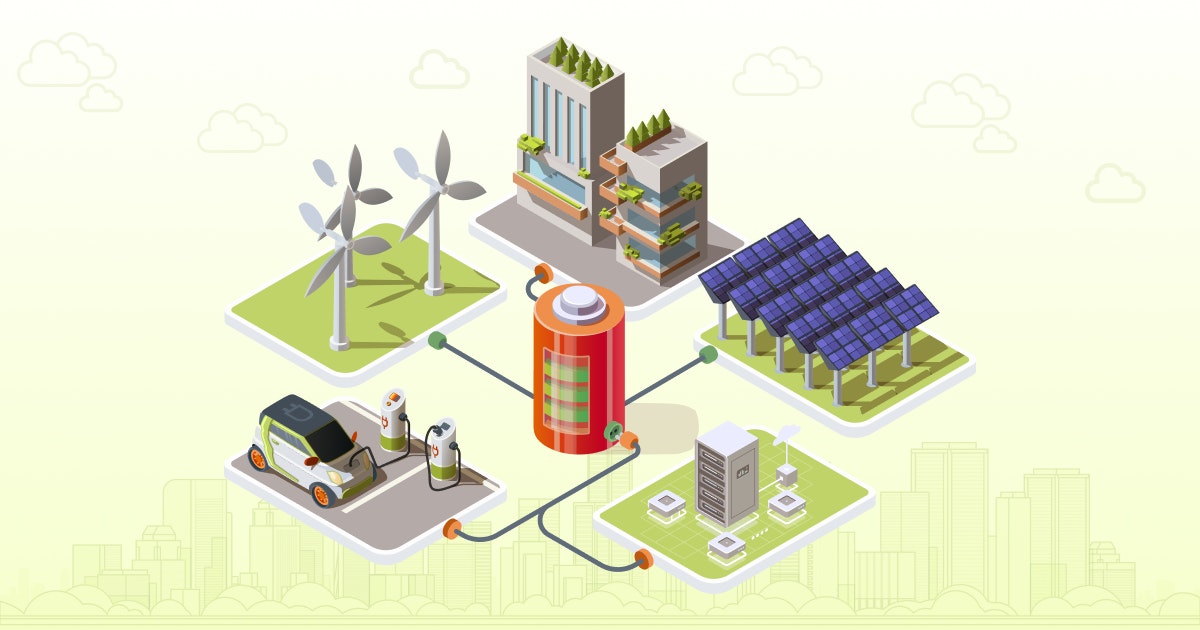Since the late 19th century, electrical power distribution networks, often known as electrical grids, have provided the majority of the world's energy. The basic idea behind these electrical grids' creation was to produce power and distribute it to buildings, residences, and other locations where there was a need for electricity.
However, as the demand for power rises, so does the need for electrical systems with greater efficiency. In order to maximize efficiency, the contemporary "smart grid" distribution systems now in use around the globe depend on cutting-edge technology. This article defines smart grids and discusses the essential technology that gives them their intelligence.
Smart Grid Technology: What Is It
An electrical power distribution system that facilitates two-way communication between consumers and the utility supplier is known as a smart grid. Data centers, smart meters, controllers, and power/current sensors are examples of digital technologies that go into smart grid technology.
There are superior and inferior smart grids. Large-scale, concentrated initiatives are underway in several nations to convert outdated electrical distribution networks into smart grids, but acceptance of these systems is difficult and takes years, if not decades.
Read also:
- How Greentech Building Technology Takes Root
- Harvesting the Breeze: Unleashing the Greentech Potential
- Sunlit Horizons: Navigating the Future of Greentech
- What are 5 Types of Green Technology
Examples of Smart Grid Components and Technology

The first stage in creating a smart grid is installing smart meters.Both the utility provider and the customer may get point-of-use energy consumption data via smart meters. Their usage and cost data advises consumers to avoid wasting energy and assists providers in optimizing load distribution across the grid.
The power system, which monitors power consumption, the microcontroller, which controls the technology within the smart meter, and the communication system, which sends and receives consumption and instructional data, are the three primary sub-systems of smart meters. Certain smart meters may also include GSM modules to locate the meter for security reasons and backup power in case the main distribution line has a power loss.
In the last ten years, the amount invested globally in smart meters has doubled. The total yearly expenditure in smart meters worldwide in 2014 was $11 million. According to Statista, by 2019 the worldwide investment in smart meters reached $21 million USD, owing to the improvements in system efficiency that come with their adoption.
The Smart Grid's Enablement
A smart grid may optimize grid efficiency via a number of infrastructure modifications when digital, two-way communication and automation technologies are integrated. The deployment of the smart grid makes the following infrastructural modifications possible:
1. Distributed Energy Generation
Energy no longer has to be produced by a single, sizable power plant since smart grids can continually monitor and regulate the flow of energy. Instead, a multitude of dispersed power generation locations, including tiny hydropower dams, wind turbines, solar farms, and household photovoltaic solar panels, may provide electricity.
Read also: how to get into greentech
2. Dispersed Marketplaces
Additionally, various grid connections are made possible by smart grid technology, allowing for the intelligent exchange of energy between conventional centralized systems. Municipalities have, for instance, always maintained separate industrial facilities apart from neighboring municipalities. Municipalities may contribute to common production schedules to remove production dependency in the case of an outage by implementing smart grid technology.
3. Transmission on a Small Scale
The delivery of electricity across long distances is one of the biggest energy losses in electrical systems. Since the smart grid facilitates decentralization of production and markets, it also substantially reduces the net distribution distances inside a smart grid, which in turn reduces wasted distribution energy.
Consider a little community solar farm, for instance, that is located one kilometer away from the neighborhood and is capable of producing all of the electricity needed throughout the day. That area could have to rely on a huge power plant located 100 kilometers distant to provide its energy if there was no local solar farm. It's possible that the energy loss from the far-off power plant's electrical transmission was lost 100 times more than the energy loss from the nearby solar farm.
4. Distribution in Two Ways
There is a chance that, in the case of the neighborhood solar farm, the solar farm will produce more electricity than is needed. An excess of energy is produced. The extra energy may then be sent into the smart grid to assist in lowering the distant power plant's demand.
In this case, during the day, electricity from the solar farm enters the main, non-neighborhood grid, while during the night, energy from the main grid enters the neighborhood. Power distribution algorithms can monitor and adjust this bi-directional energy flow to guarantee that there is never any energy lost when using it.
5. Involvement of Customers
Customers may function as micro-generators in a smart grid architecture including decentralized grid boundaries and bi-directional distribution. For instance, standalone PV solar systems that can produce electricity at the point of consumption may be installed in individual residences. The demand for the bigger, centralized power plants may be further reduced by feeding any extra energy produced by the household PV system onto the wider grid.
The Value of Intelligent Grids
Macroeconomic power consumption reduction depends critically on smart grids. Because adopting a smart grid is advantageous from a financial and environmental standpoint, many local governments and energy companies give substantial incentives for participation. Energy production may be made more democratic by implementing smart grids, which will lower power system running costs, eliminate outage risks, and eliminate needless energy waste.
Read also: Greentech Recycling: Revolutionizing Sustainability

.png)